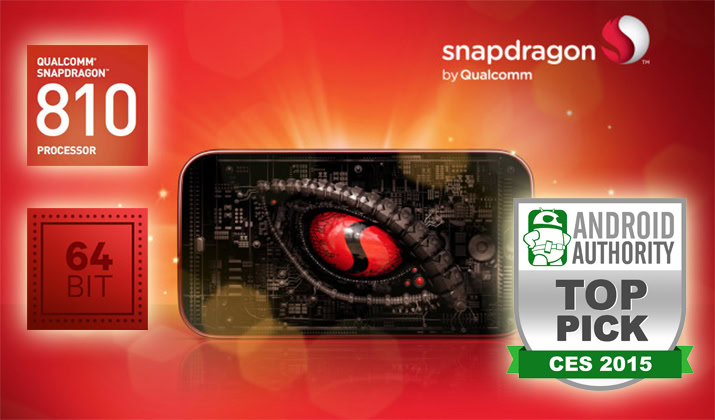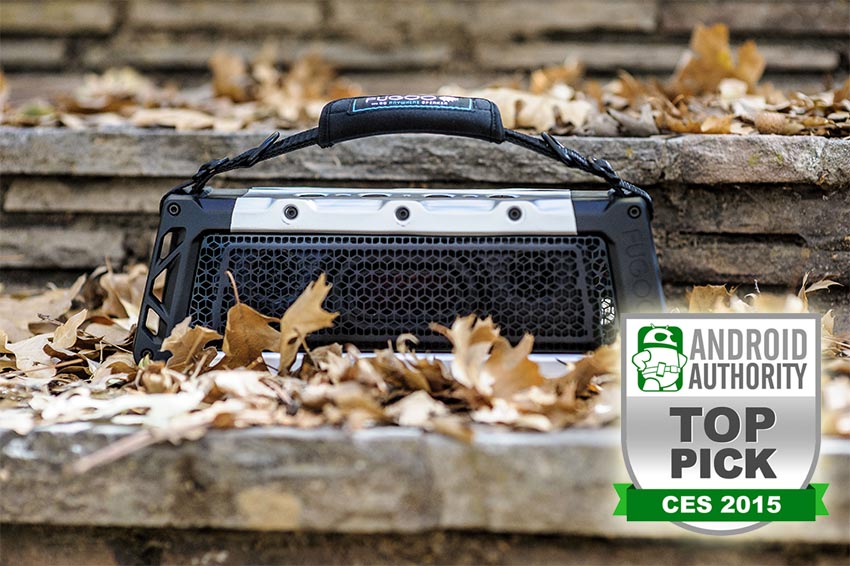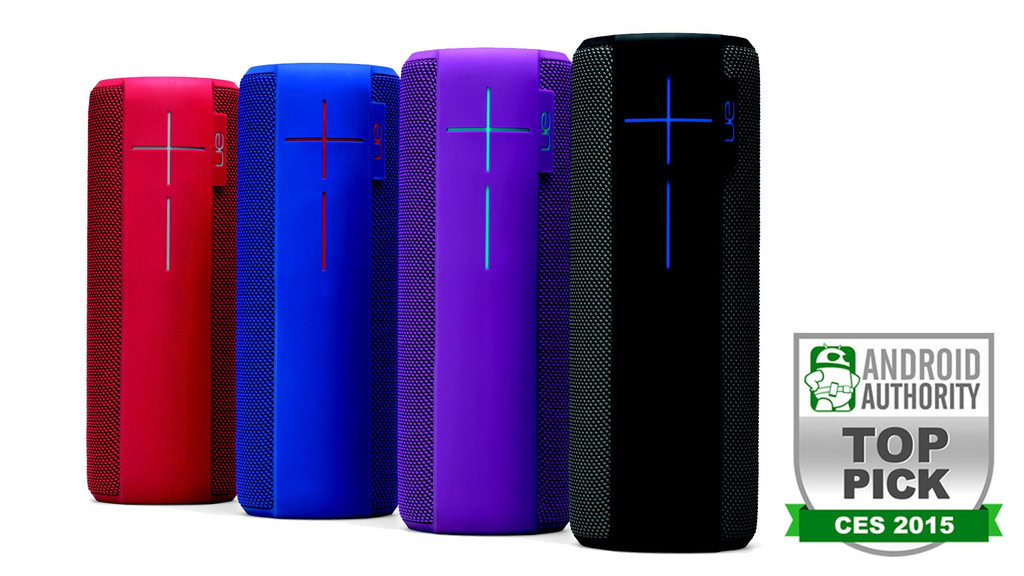Affiliate links on Android Authority may earn us a commission. Learn more.
Our top picks from CES 2015!
Following the slow down in news that comes during the holiday season, every January CES arrives on cue, ready to kick off the new year and give us a small taste of what to except in the weeks, months and, sometimes, even years to come. While this year’s CES was arguably a bit mild for Android fans, there were actually several noteworthy products shown off last week, including LG’s new flagship-level G Flex 2.
For those who regularly follow Android Authority, you know that we typically give out top pick awards at all major tech shows, recognizing the devices and technologies that most impressed us. This year is no exception, and so let’s jump right in and take a look at our Android Authority CES 2015 top picks!
LG G Flex 2
We’re sure no one is surprised to see that the LG G Flex 2 made the cut. Easily one of the biggest announcements of CES, if not the biggest, the G Flex 2 builds upon the solid foundation of its predecessor, though this time LG listened to some of the biggest gripes most of us had with the original G Flex: namely the oversized 6-inch display with a less than flattering 720p resolution. The G Flex 2 not only features a smaller 5.5-inch 1080p curved display, LG has also greatly improved the build quality, enhanced special features like quick healing (which is now even faster), and will be the first globally available handset to market that ships with a Snapdragon 810 processor.
While the G Flex was a solid device with reasonably higher-end specs, the G Flex 2 is a great step forward and so picking it as a top pick was sort of a no-brainer.
ASUS Zenfone 2
ASUS unveiled the first-generation ZenFone line back at CES 2014, coming in 4, 5 and 6-inch variants. A year later, they’ve now refreshed the series at CES 2015 with the ZenFone 2 and the ZenFone Zoom. While both of these devices are quite solid, we want to give special attention to the ZenFone 2. The ZenFone 2 is interesting for a number of reasons: it’s ergonomically-curved design and slim edges, its pricing begins at just $199, and there’s a model available that comes with a massive 4GB of RAM.
Bottom-line, the ZenFone 2 takes everything we liked about the original ZenFone series and upgrades it with improved Intel-powered internals and a better overall design. Aggressive pricing is what really sells this series, though we still don’t know exactly how much the higher-end 4GB variant will set consumers back.
HTC Desire 826
While HTCdoesn’t break the mold with the Desire 826, we applaud the work HTChas done in the mid-range sector, creating handsets that look and feel so premium you’d be forgiven if you thought they were actually flagship products. As far as looks are concerned, the Desire 826 seems a bit like a cross between the Desire 820 and the Desire Eye, both of which were released last fall.
The Desire 826 might follow a similar design as found on 2014’s Desire family, but the 826 is noteworthy for a few reasons. First, the handset is the first HTCdevice to ship with Android 5.0 Lollipop right out of the box, with Sense on top of it. Second, the Snapdragon 615-powered handset experiments with the somewhat controversial HTCUltraPixel cam in a new way, bringing it to the front. On the back, is the same 13MP shooter we’ve seen on several recent HTCmid-range products.
Qualcomm Snapdragon 810

YotaPhone 2
[bcPortal width=”800″ height=”450″ videoid=”3987681277001″ publisherid=”3674338003001″ playerid=”3674338273001″ autostart=”false”] The YotaPhone 2 was released a couple of months ago, but its presence at CES 2015 was a great way for the company to showcase this unique smartphone to the US market. Yota has certainly come a long way with their signature smartphone, from the more experimental first iteration to the YotaPhone 2, which includes an even better implementation of its unique rear display setup.
This device may not feature the latest and greatest in terms of specifications, but the rear display is far from just a gimmick, and can actually prove to be quite useful to a lot of users. Being able to stand out in an overcrowded smartphone market is one of the many reasons the YotaPhone 2 is certainly deserving of our Best of CES 2015 top pick title!
Saygus V2
While the Saygus V2 may not be as unique as the LG G Flex 2 or the YotaPhone 2, what really caught our eye was everything it manages to pack into a single device. A beautiful display, front-facing Harman Kardon speakers, and a storage capacity more than what you may know what to do with, the V2 is certainly worthy of its title as a true multimedia smartphone.
That is just the tip of the iceberg when it comes to the V2, which also features a 21 MP rear shooter, a 13 MP front-facing camera, and a fingerprint scanner, all in a premium looking Kevlar and metal body. Of course, the marquee feature of the Saygus V2 is its storage capabilities, with 64 GB of on-board storage enhanced by two 128 GB microSD card slots, for a total of potentially 320 GB of memory. The V2 also comes with an unlocked bootloader and it is easy to gain root access, making this a dream device for developers as well.
ZTE SPro 2
The pico projector is capable of outputting a 720p image up to 120-inches in size, with a brightness of 200 lumens, doubling what was available with its predecessor. As was the case with the first iteration, the SPro 2 also works as a 4G LTE Hotspot, allowing for up to 8 devices to be connected simultaneously. USB 3.0, HDMI, and audio connections are all available, along with a potential storage capacity of up to 2 TB. The battery has also seen a bump to 6,300 mAh, which means that the SPro 2 can run for 3 hours while used a projector, and up to 10 hours when functioning as a hotspot.
A skinned version of Android 4.4 Kitkat is available on-board, packed with useful media-centric features, with navigation made possible easily on the 5-inch touchscreen. A Qualcomm Snapdragon 800 processor and Adreno 330 GPU found under the hood also make some portable projector-based gaming possible. The metal construction also gives it a more premium look.
The ZTE SPro 2 improves on its predecessor in a number of ways, and should allow for an even better experience this time around.
Learn more about ZTE SPro 2:
Sony Bravia Android TV
[bcPortal width=”800″ height=”450″ videoid=”3987137602001″ publisherid=”3674338003001″ playerid=”3674338273001″ autostart=”false”]
A pleasant surprise during CES 2015 was from Sony, and it had nothing to do with their next flagship smartphone or tablet. Instead, it was the announcement that the upcoming line of Sony Bravia Smart TVs would come with Android TV on-board.
With Android TV, users now have access to movies, TV shows, games, and music, all through Google Play. The TV sets ship with a remote for navigating around the OS, and for using Google Now through voice dictation. Gaming is also possible using any Android-compatible controller, or even a Playstation 4 controller, connected to the TV via Bluetooth.
While we focused mostly on the 4K model during our CES coverage, what truly makes Sony’s Android TV partnership significant is that it applies to all smart TVs made by Sony, meaning no more custom interfaces for Sony smart TVs. Sony’s commitment to Google’s TV platform is a huge boost for Android TV, and adds a whole other aspect to the television viewing experience, which we can’t help but be excited about.
Learn more about Sony Bravia Android TV:
Fugoo XL

Fugoo took the wraps off its latest lineup of wireless Bluetooth speakers at CES 2015, and as the XL in the name suggests, it is not an understatement to say that these speakers have been super-sized, by almost 4 times, when compared to its predecessors.
In terms of design, things remain largely the same though, just in a much bigger iteration, with the latest series also coming in Style XL, Sport XL, and the Tough XL versions. The Tough XL is of course the most rugged of the lot, said to be nearly indestructible, but the good news is that all Fugoo Bluetooth speakers come with a IP67 certification for protection against dust and water, with the Style XL and Sport XL versions also coming with the ability to float.
It’s not just the size that has been given a boost, with each of the speakers now coming with eight acoustic drivers, compared to the six of the original, adding two more neodynium tweeters for a total of four, along with two neodymium aluminum domed mid-woofers, and two passive radiators. Of course, the battery has been super-sized as well, now offering up to 35 hours of continuous playback at moderate volume levels.
In a world where wireless Bluetooth speakers, good and bad, are a dime a dozen, the Fugoo XL certainly manages to stand out in a crowd.
UE MEGABOOM

Joining the Fugoo XL in the supersized wireless bluetooth speaker department is the UE MEGABOOM, that was also unveiled last week during CES 2015. A follow up to the successful BOOM speakers by Ultimate Ears, a subsidiary of Logitech, the MEGABOOM brings with it the same great cylindrical design, in a bigger, and more powerful avatar.
Even though this latest speaker is larger, it’s easy to hold in one hand and weighs about the same as its smaller sibling, making it just as portable. It boasts a Bluetooth connectivity range of a 100 feet, with a larger battery allowing for audio playback of up to 20 hours, playtime up to 20 hours, and like the original, can be paired with another MEGABOOM speaker for a stereo sound.
For those audiophiles looking for a high-quality bluetooth speaker experience, the UE Megaboom is hard to beat, and that’s why we felt it was worthy of one of our Best of CES 2015 awards!
Wrap Up
At least from a mobile-focused perspective, this year’s CES was less about innovation and more about making improvements to existing technologies. Of course, this isn’t necessarily a bad thing, as the G Flex 2, ZenFone 2 and even the S Pro 2 are all great examples of how to take an existing product and make it even more desirable. What do you think of this year’s Best of CES top picks winners? Agree with them, feel we let something out? Let us know what you think in the comments.
As for what’s next? CES may now be behind us, but Mobile World Congress will be here before we know it and 2015 is already shaping up to be a pretty exciting year. Be sure to stay tuned to Android Authority as we strive to deliver the very best in all things Android and mobile technology!